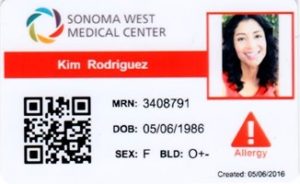Since first announcing that Meaningful Use (MU) would go the way of dinosaurs in January of 2016, CMS has been less than forthcoming in defining what the world might look like for hospitals after MU. While the MACRA program has begun to define how clinicians will be paid, hospitals remain in limbo with CMS stating that they should expect changes, but with a lack of clarity about what they will be.
In a recent article on healthcareit.com titled “Is CMS Looking to Replace Meaningful Use for Hospitals?”, Mike Miliard asks the question that is on everyone’s mind but that CMS has yet to give clear guidance to.
An internet search for articles on the future of Meaningful Use turns up only a few that have been written since January of 2016, when CMS first announced sweeping changes in MU. One exception is an April article on the Federation of American Hospitals website titled “MACRA Proposed Rule Lacks Meaningful Use Flexibility for Hospitals” – See more at: http://fah.org/blog/macra-proposed-rule-lacks-meaningful-use-flexibility-for-hospitals#sthash.1MDZtnai.dpuf
This article includes the following:
‘CMS’s proposed rule would provide regulatory relief to eligible physicians under the MU program, by offering them greater simplification and flexibility using the “Advancing Care Information” criteria, which is the new name for EHR use for physicians. Unfortunately, the rule fails to give hospitals the same relief. Hospitals must meet compliance thresholds with an “all or nothing” approach for MU criteria, which is too demanding and unnecessary.’
It has been widely acknowledged that many hospitals failed to achieve MU Stage 2 and others struggled to do so at the expense of patient care. While we wait for a road map, Congress has started to get into the act with proposed legislation that would ease the requirements of physicians but it may be too little too late. In a July 10th article, Congresswoman Rene Ellmers was reported to say that ‘Many physicians have told her they would rather take the 2% penalty for failing to comply with Meaningful Use than to meet the requirements’. Wanda Filer, MD, FAAFP, President of the American Academy of Family Physicians, also has heard physicians say they may pay the penalty or apply for a hardship waiver to avoid the penalty.
Another concern that Meaningful Use has raised is the lack of innovation that would make EHR systems easier to use, more interoperable, and more adaptable to hospital and clinic environments. With EHR vendors and hospitals spending so much time on MU and being limited to the structure of MU testing, the industry has often failed to deliver on the promise of EHR to make hospitals more efficient.
Let’s hope that CMS can get their act together to settle on a future road map instead of putting band aids on Meaningful Use that don’t deal with the underlying problems.
 the barcode can be processed by whatever application is currently running on the mobile device. Barcodes can be placed on supplies, medical equipment, inventory locations, bins, medications and rooms as well as patient cards and wristbands. Patient cards can be used in the admitting areas of the hospital and wristbands once patients are admitted.
the barcode can be processed by whatever application is currently running on the mobile device. Barcodes can be placed on supplies, medical equipment, inventory locations, bins, medications and rooms as well as patient cards and wristbands. Patient cards can be used in the admitting areas of the hospital and wristbands once patients are admitted.